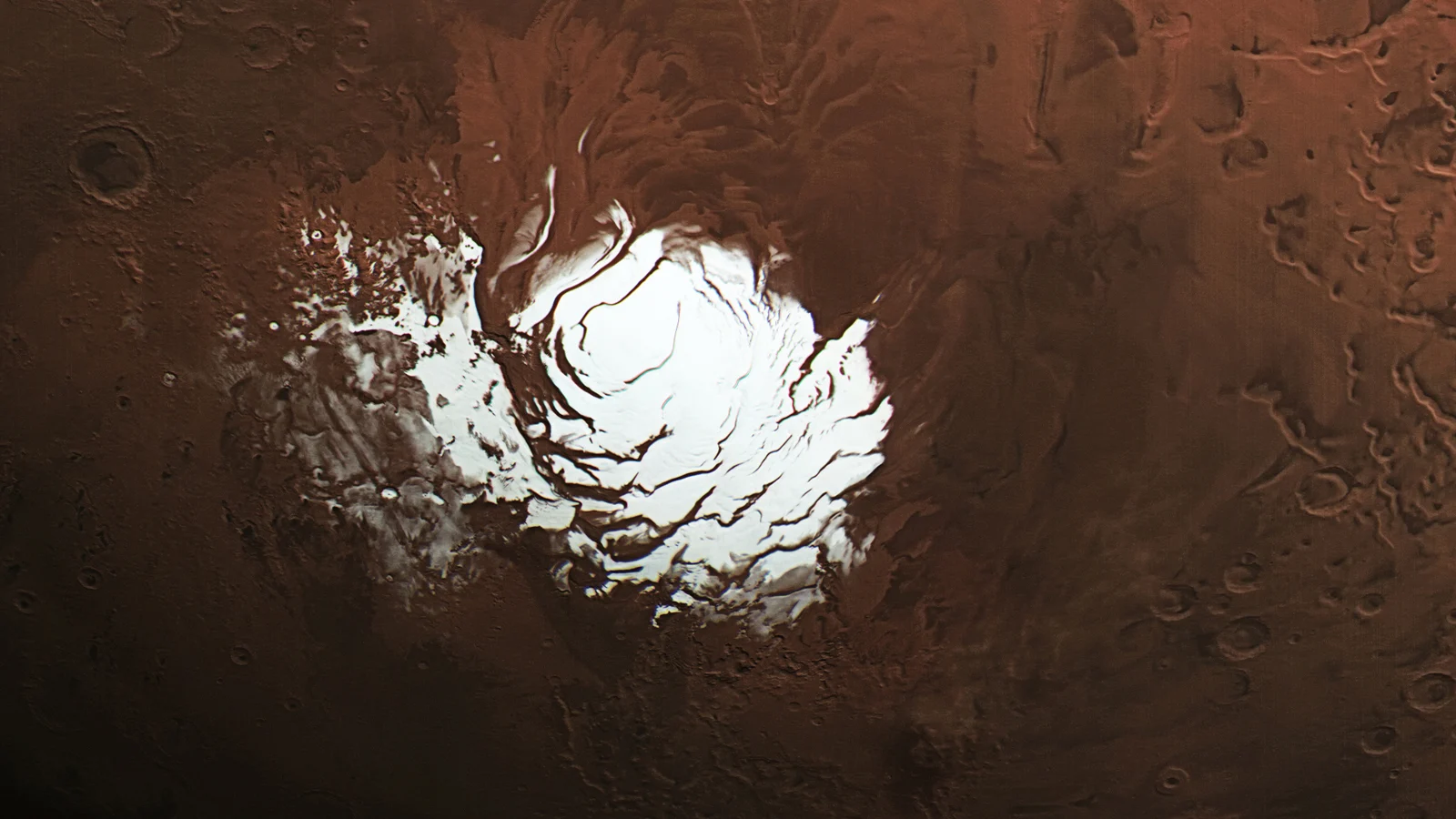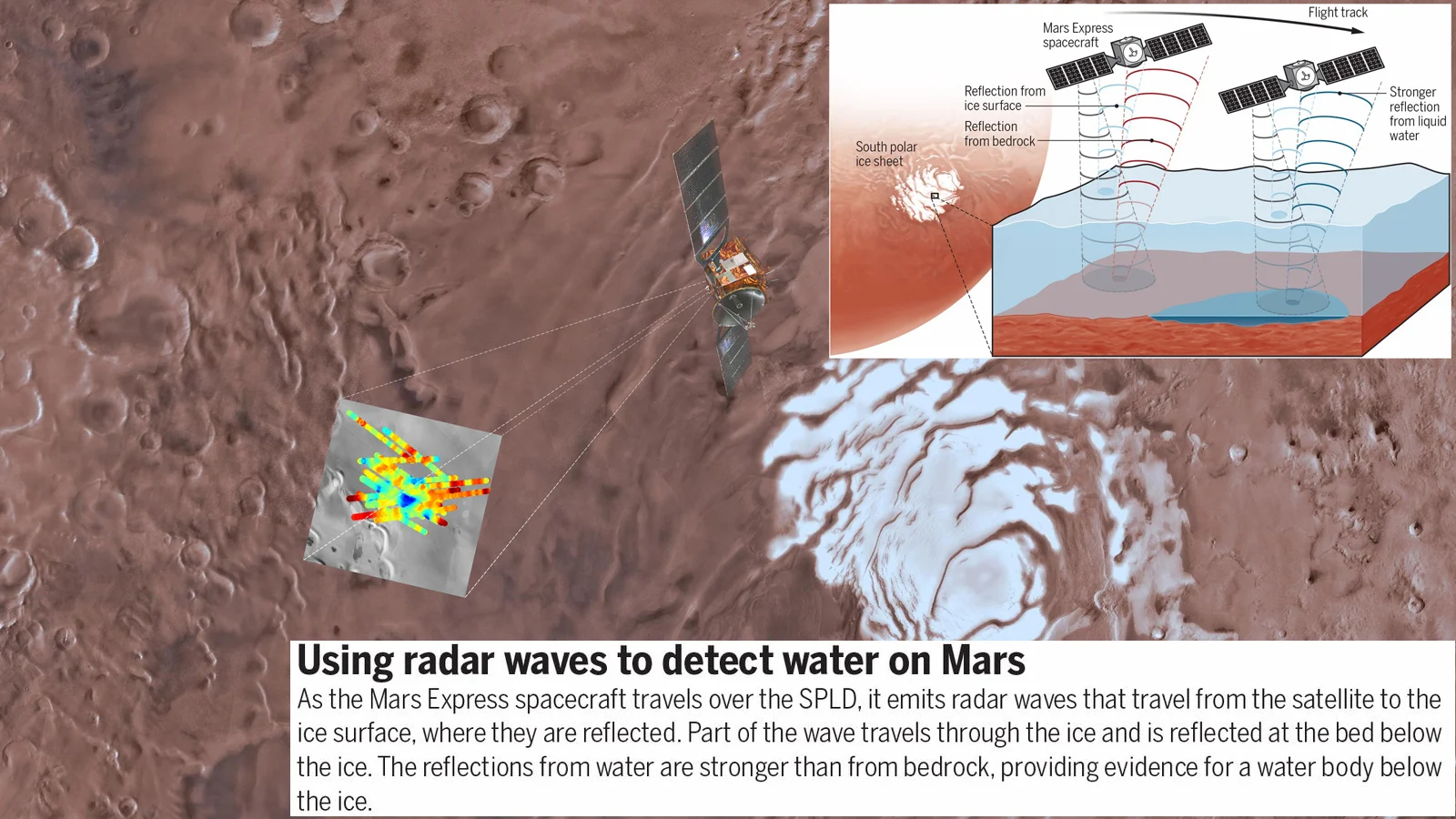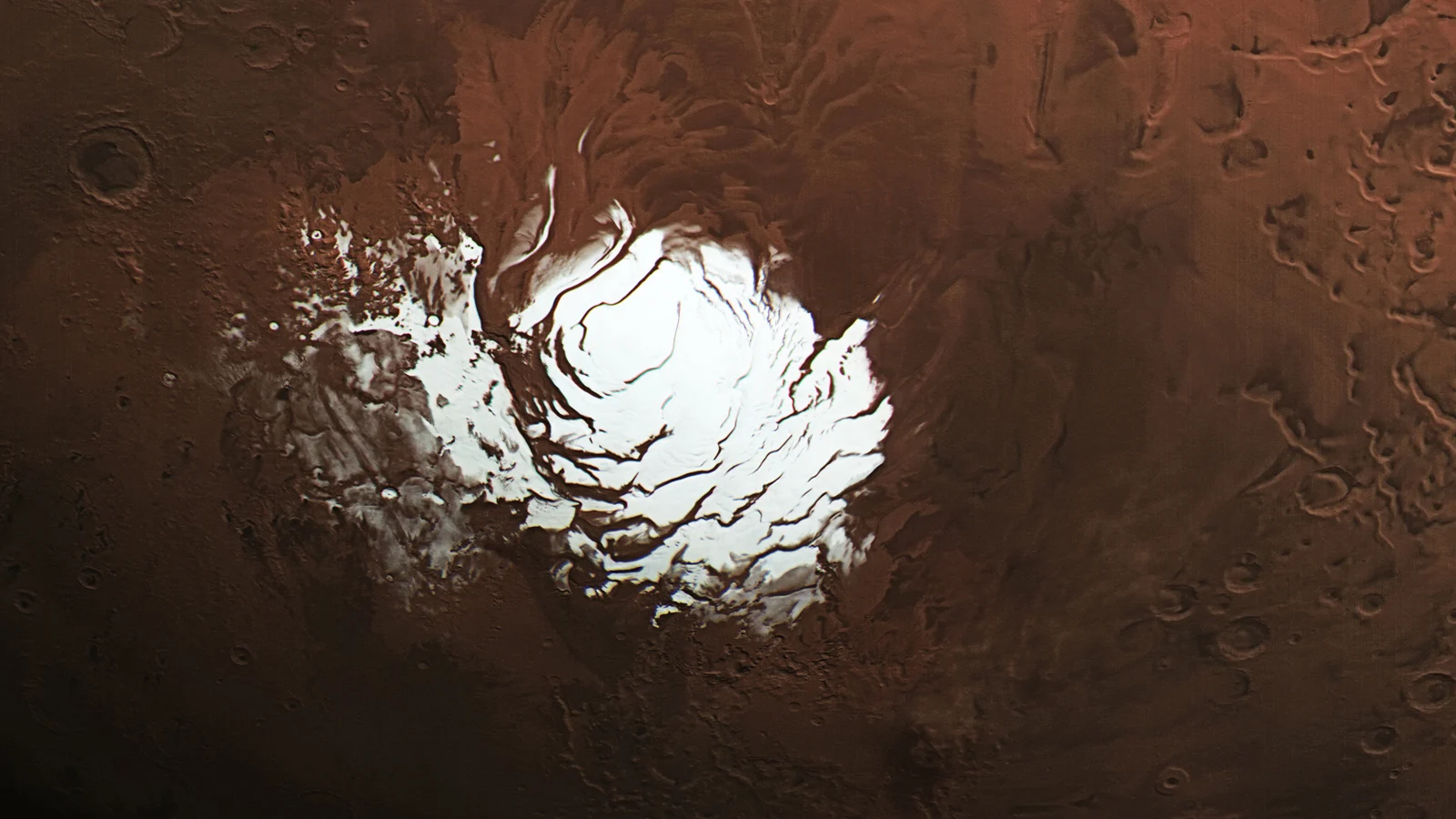
Even more salty lakes found under Mars' south pole
These reservoirs of briny water could harbor alien life
Scientists have now confirmed the 2018 discovery of a large lake of salty water under Mars' south polar ice cap, and they have also found that it is not alone.
The Mars Express spacecraft has been orbiting the Red Planet for over 17 years now. It supplies space enthusiasts with spectacular imagery of the planet's surface, and it continues to make surprising scientific revelations.
In July of 2018, a team of Italian scientists using data collected by the Mars Advanced Radar for Subsurface and Ionosphere Sounding (MARSIS) instrument reported the discovery of bright radar reflections deep under the surface near Mars' south pole. The most likely explanation for these bright signals was the presence of liquid water.
Watch below: Liquid water found on Mars? What does this mean?
Now, a new study has revealed that there's not just one lake of salty water under Mars' south pole - there are several!
"Not only did we confirm the position, extent and strength of the reflector from our 2018 study, but we found three new bright areas," study co-author Elena Pettinelli, from Roma Tre University in Italy, told BBC News.
"The main lake is surrounded by smaller bodies of liquid water, but because of the technical characteristics of the radar, and of its distance from the Martian surface, we cannot conclusively determine whether they are interconnected."

MARSIS radar data shown here reveals the large salty lake (in deeper shades of blue, center), surrounded by several smaller regions that also indicate water (lighter shades of blue). According to the study, any shaded area on the map that corresponds to a value of 15 or greater, on the right-hand colour scale, indicates the presence of water. Credit: Lauro, et al./Nature Astronomy
While the primary lake is estimated at about 30 kilometres long by 20 kilometres wide - roughly the same size as Ontario's Lake Simcoe - the smaller bodies of water range in size from about 6 km to 12 km wide. The radar's resolution apparently does not allow them to determine if any rivers or channels link these reservoirs.
The discovery of even more liquid water under Mars' surface is exciting news. Given that there are many thick deposits of buried ice around the planet, it raises a few questions. Just how wide-spread are these subsurface lakes, and what are the implications for finding alien life?

Background image: Superimposed upon a 2015 Mars Express image of the south polar region, colour-coded ice-penetrating radar data from the 2018 study shows bright reflections indicating the presence of liquid water. Credits: USGS Astrogeology Science Center, Arizona State University, ESA, INAF. Inset: A graphical explanation for how Mars Express' ice-penetrating radar works. Credit: Kellie Holoski/Science
Science gathered by other Mars missions has shown us that the planet was once a warmer, wetter place in the distant past. It's possible that an expansive liquid ocean once covered much of the northern hemisphere, with numerous lakes dotting the southern hemisphere, interconnected by rivers and streams.
"Of course, the implication of this is that you would have a habitat or something that resembles a habitat... that lasted throughout the history of the planet," co-author Roberto Orosei, from Italy's National Institute of Astrophysics in Bologna, told BBC News.
Current research blames the thinning of Mars' atmosphere by the solar wind, brought on by the loss of the planet's magnetic field, for today's frigid Mars wasteland. Supposing there was life on Mars before these events, subsurface lakes might have provided them with a place to shelter against the new, harsher planetary conditions.
"As Mars was undergoing its climatic catastrophe and turning from a relatively warm planet - though it's not clear how warm - to a frozen waste, there was a place where life could adapt and survive," Orosei said.

This slice of a Mars Express image from 2015 shows Mars' south polar region, with its prominent water and carbon dioxide ice deposits. Credit: ESA/DLR/FU Berlin, CC BY-SA 3.0 IGO
Whether anything could live in water this briny is still up for debate. Signs of life have apparently been found in similar subglacial lakes, such as Antarctica's Lake Vostok. According to John Priscu, an environmental scientist at Montana State University who has studied these extreme environments, microbes have been found in briny water. When the salt content becomes too high, though, the chances of finding life diminish.
"There's not much active life in these briny pools in Antarctica. They're just pickled. And that might be the case [on Mars]," Priscu told Nature.
There are three upcoming missions to Mars that are at least partly dedicated to finding signs of life. Two are already on their way, with a third scheduled to launch in a couple of years.

This artist's conception drawing shows NASA's Perseverance rover and its tiny Ingenuity drone, which are currently on their way to Mars. Credit: NASA/JPL
NASA's Perseverance rover is scheduled to touch down in Jezero Crater, just north of Mars' equator, in February of 2021. There it will explore an ancient river delta for evidence of past life. China's Tianwen-1 mission - a combination orbiter, lander and rover - will arrive roughly the same time and attempt a touchdown for its lander and rover later in 2021. Its goals include searching for signs of both past and present Martian life. The ESA's ExoMars Rosalind Franklin rover, originally scheduled to launch this year, has been delayed until 2022, with an expected landing in 2023. It will also search for signs of past life.
Sending a mission to the south pole to get a closer look at these subsurface lakes, though, would be extremely difficult. Most missions aim to land in Mars' 'tropical' or 'temperate' regions to take advantage of the warmer weather, and for those that operate on solar power, the more intense sunlight.











